Latest News
In July, the Big Park Council requested donations for our community to conduct a final legal analysis regarding the APS proposed above ground transmission line. Thanks to our generous donors, the legal analysis is complete. Disappointingly, on the advice of Counsel, the Big Park Council will not pursue litigation against the Forest Service. We have strong arguments to bury the full transmission line, but the case would not be judged on merit. Administrative judgements of this type are limited to procedural grounds only, as outlined in the National Environmental Policy Act of 1970.
Legal Research Findings
Our comprehensive legal review revealed important insights into the viability of challenging the USFS decision:
- Merit-based prospects: The research indicated that a lawsuit based on the factual merits could have had reasonable probability of success.
- Administrative reality: However, legal challenges to USFS decisions are limited to administrative and procedural grounds under the National Environmental Policy Act (NEPA), not factual merits.
- Assessment: The research concluded that USFS likely met NEPA’s procedural requirements, making the probability of a successful legal challenge low.
- Cost considerations: Even if pursued, such litigation would likely be expensive with uncertain outcomes.
Moving Forward
While these findings are disappointing, the Council has made the responsible decision not to pursue legal action against the USFA decision at this time. Instead, we are redirecting our efforts toward productive solutions:
- Working collaboratively with relevant parties to develop wildfire risk mitigation
- Pursuing measures to minimize scenic impacts from the overhead transmission line
- Continuing to support private landowners and HOAs in their efforts to require underground power lines on their properties
Please note that the USFS FONSI decision does not affect portions of the APS project requiring new or modified easements on private land, where property owners retain important rights.
The Council’s primary suggestions to mitigate the appearance of the overhead line were to gently curve the route as it climbs the visible slope and to relocate one pole at the top of the saddle.
APS did not implement these changes and has declined to provide a detailed map of the route on Forest Service property.
APS has committed to use non-reflective components in construction. In addition, they are installing an infrared camera on one pole to provide early warning of wildfire ignition.
The line on Forest Service property is scheduled to be completed by March of 2026. At that time, APS will tie into the existing line to provide some redundancy, albeit at a lower capacity.
APS has provided a detailed map of the proposed route on private property at our request (See the APS project link below). Easement negotiations with private property owners are continuing. We support any efforts by private property owners to underground the line in the final segment between Forest Service property and the Big Park substation.
Oak Creek to McGuireville 69kV Project | APS
Earlier News
July 23, 2025 – Fundraising Goal Achieved – No Further Donations Required
We have met the $6,000 fundraising goal for a final legal review of the prospects of a successful legal challenge of the USFS decision on the APS Powerline Project. That review is currently underway.
July 18, 2025 – Public Request to Help Finance a Final Legal Review of the Prospects of Successful Legal Action
The United States Forest Service (USFS) process for objecting to the above ground transmission line near and into the Village of Oak Creek (VOC) is complete. One next step is to evaluate the prospects of success of legal action.
In July 2023 the Big Park Council (BPC) engaged with EarthRise Law Center to analyze the prospects in federal court for successfully challenging the USFS decision on the APS Powerline Project. Due to the lack of the final USFS documents and a response to our Freedom of Information (FOIA) request, their assessment was inconclusive.
The final Earthrise assessment memo is still being held confidential as privileged attorney-client communication. Although the memo takes no clear position regarding the likelihood of success in a lawsuit challenging the Forest Service, it should be said that the memo is neither overly positive nor hopeless.
Now that the final USFS documents have been published, an updated legal analysis is needed.
July 10, 2025 – The Big Park Council approved a motion that states:
“That Big Park Council supports research by Gallagher & Kennedy, P.A. to analyze the prospects in federal court for successfully challenging the USFS decision on the APS Transmission Line Project based on the previous Earthrise memo and the final USFS documents. Funding for this research would come from voluntary contributions and not from any special dues assessment of Council members.
In addition, the Council supports the private landowners and HOAs in their efforts to compel APS to underground power lines that cross their lands.
Finally, the Council supports working with relevant parties to enact strategies and mitigation measures to decrease wildfire risk and scenic impacts from the USFS-allowed overhead transmission line.”
During March and April, the BPC was in contact with two non-profits: Scenic America, an organization based in Washington, D.C., dedicated to preserving scenic views and promoting the undergrounding of transmission lines and Underground Arizona, an organization which focuses on providing unbiased information about under grounding utilities. Both organizations have been supportive of the Council’s position.
On May 9, the BPC received the U.S. Forest Service, Southwestern Region’s, response to the Council’s objections to the APS Oak Creek to McGuireville 69kV Transmission Line Project Final EA and Draft DN.
The response letter concluded that the project met all applicable legal requirements and that it will proceed without further administrative review. The letter also indicated that Forest Supervisor Aaron Mayville was instructed to provide further clarification regarding several aspects of the project.
The conclusion of the Objection Response letter states:
CONCLUSION
I have reviewed the project in light of the issues presented in the objection letters received. My review finds that the project is in compliance with all applicable laws and the 2018 COF Forest Plan. However, based on my review, I am instructing COF Forest Supervisor Aaron Mayville to:
- Provide more detail on how the APS CFMP* would serve to mitigate wildfire ignition risk.
- Clarify that the Selected Alternative is consistent with the desired condition for Special Uses (FW-SpecUse-DC-03).
- Correct the Final EA through an erratum to indicate the above ground segment D to E contains Semi-Primitive Motorized, Roaded Natural, and Rural ROS classifications that are consistent with the selected Alternative. Provide more information to demonstrate this finding.
- Clarify impacts to SR 179 viewsheds for Segments C to D and D to E, including potential impacts from project activities in viewsheds along SR 179, as this is a scenic road with the All American Road designation.
- Clarify the effects to scenery determination that Alternative 2** will have more impacts than Alternative 1***.
- Include information on transition infrastructure between affected Segments where the transmission line is installed undergrounded and then moved above-ground and vice
My review constitutes the final administrative determination of the Department of Agriculture; no further review from any other Forest Service or Department of Agriculture official of my written response to your objection is available [36 C.F.R. § 218.11(b)(2)].
If you have any questions or concerns, please contact Roxanne Turley, Regional Administrative Review Coordinator, at roxanne.turley@usda.gov.
Sincerely,
JACOB NUTTALL
Deputy Regional Forester
*Arizona Public Service Comprehensive Fire Management Plan
** Alternative 2 is to route the line underground
*** Alternative 1 is to route the line overhead
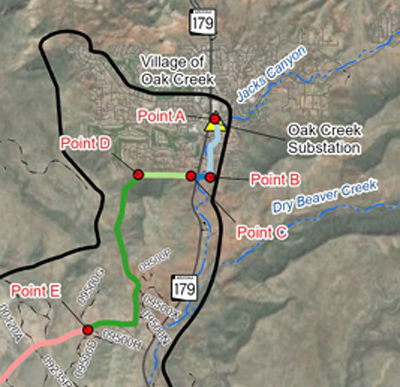
Map showing latest proposed route of transmission line
The Big Park Council is actively considering its next steps.
Link to the full USFS Response Letter.
Link to the Final EA and Draft Plan.
BPC Action History & Project Overview
February 26, 2025 – BPC Files Objection Letter
On Wednesday, February 26, the Big Park Council submitted an Objection Letter regarding the CNF’s January 16, 2025, Draft Decision Notice to allow APS to build an overhead transmission line in proximity to the Village of Oak Creek.
The Council’s opposition to the overhead transmission line heavily focuses on four issues:
- The increased risk of wildfires;
- The negative impact on the scenic and recreational value of the proposed route;
- The negative impact on property values; and
- The lack response from the Forest Service to the Council’s Freedom of Information request of September, 2023.
The Council feels these concerns would be eliminated by several reasonable alternatives, including placing the lines underground in the area affected.
Link to the Full Objection Letter. Link to the APS Reading Room
February 19, 2025 – Public Meeting Held
A community meeting was held on February 19 at 7:00 PM at the VOC Church of the Nazarene where a great turn out of over 200 people strongly voiced their opposition to the CNF Draft Decision to allow a new above-ground transmission line in the areas near the VOC.
January 16, 2025 – Forest Service Issues Its Final Environmental Assessment
Coconino National Forest issued its final Environmental Assessment (EA) for APS’s proposed 13.4 mile high-voltage transmission line between McGuireville and the Village of Oak Creek Substation on January 16, 2025. A high-level summary of the project and the opportunity to object can be found at APS Oak Creek to McGuireville 69kV Transmission Line Project.
September 27, 2023 – Public Meeting Held: An educational forum sponsored by Big Park Council attracted some 30 local residents to discuss the proposed powerline project by Arizona Public Service, which is currently pending approval by the U.S. Forest Service. The meeting was held at the VOC Church of the Nazarene. In its presentation a special subcommittee tasked by BPC with monitoring the project has questioned APS outage data justifying the project and also APS’s estimated costs if the line were to be buried. According to the Forest Service’s analysis of the purpose for the project APS “is generally required to follow a principle of a ‘continuity of service’ and would face scrutiny from the [Arizona Corporation Commission], including providing outage information and potentially performing studies and efforts to improve reliability.”
According to APS, VOC customers experience, on average, one sustained power outage each year of four hours, seven ‘momentary’ outages, and 150-160 hours of rotating power outages, or brown outs, during peak summer power demand. In addition, APS has told BPC that over the last 10 years the Village has experienced a total of 16 outages ranging from two minutes to 68 hours. In response, BPC surveyed local APS customers who have access through their own customer accounts to check on outages for the last three years. Instead of one major power outage of four hours a year, BPC’s survey of 110 residents – respondents were spread evenly across the community – resulted in two events every three years averaging 38 minutes each, and no record of any rotating outages.
In addition, BPC presenters noted that while the draft EA estimated that the cost of burying the powerline is around $7.45 million per mile, another utility in California, Pacific Gas & Electric, has experienced actual ‘undergrounding’ costs of $4 million a mile, with more recent costs of $3.3 million and expected to be lower in the future. In other words, the cost of burying at least key sections of the line may be inflated by APS and less than half the estimated cost provided to the Forest Service.
September 2023 – the Big Park Council fundraising effort reached its goal of $10,000, thanks to the many generous donors to this campaign including the very generous matching gift from the Sedona Village Partnership! We are working with environmental attorneys to explore legal options.
February 2023 – Representatives of Big Park Council and Keep Sedona Beautiful met with Supervisor Mayville to discuss the concerns outlined in its 2022 comment letter. In addition, the Council suggested CNF consider rerouting the power line away from Kel Fox Trail and burying it along Beaverhead Flat Road to the intersection with Hwy.179, and then continue burial all the way north to the substation at Jacks Canyon Road.
January 2023 – the USFS appointed a new Supervisor, Aaron Mayville, to manage the 1.8 million acre Coconino National Forest.
August 2022 – In a meeting with interested parties, CNF released a modified project route that included burial of segments of the power line along Cornville and Beaverhead Flat roads, but rerouted Kel Fox Trail so that much of the remainder of the power line route would be above ground
January 2022 – The original public comment period closed in January 2022. BPC filed comments during that period, urging CNF as a condition for approving the project to require APS to bury key sections of the powerline, and to consider other, more environmentally friendly alternatives such as a community microgrid or battery storage system in the event of power outages.
December 2021 – Coconino National Forest (CNF) released for public comment a 120-page draft Environmental Assessment (EA) detailing APS’s proposed 13.4 mile high-voltage transmission line between McGuireville and the Village of Oak Creek substation and offering several alternatives. 1) no action, meaning CNF would not issue a special use permit for the project; 2) approve an all above-ground power line; or 3) an all-buried powerline. Public comments were submitted, and changes were made, but parts of the line are still proposed to be above ground including over 2.5 miles immediately south of the VOC on 65-foot-tall poles.
May 2021 – The Council approved the following position:
The Big Park Regional Coordinating Council supports an underground powerline from the intersection of Cornville Road and Beaverhead Flat Road into the Village of Oak Creek to the Oak Creek substation (as indicated on Exhibit A), while permitting above-ground construction on the other side of Cornville Road.
Further, as an alternative to partial burial of the new powerline, the Council supports studying the feasibility of a microgrid community containing a solar-generated source of energy and relying, as needed, on conventional power from APS.
February 2021 – BPC surveys local community and finds strong opposition to overhead powerlines.
December 2020 – APS declines to provide the BPC subcommittee with cost-benefit information and suggests BPC coordinate any concerns or questions to the Forest Service.
September 2020 – APS Transmission Line Subcommittee Created The APS Subcommittee created from the task force monitoring the project. The subcommittee is an ad hoc, meaning temporary, subcommittee of the Council’s Planning & Zoning Committee. Its purpose is to represent the Council, in an advocacy role, on matters related to Arizona Public Service’s proposed 13-mile high-voltage transmission line between McGuireville and the Village of Oak Creek’s substation at the southeast corner of Highway 179 and Jacks Canyon Road
January 2020 – CNF invited public comments on the proposal and in February 2020 the Council’s task force responded with brief comments expressing concerns and suggesting extensive underground burial.
2019 – APS Public Meeting – Proposed building a roughly 14-mile high-voltage, above-ground transmission line between McGuireville and the Village of Oak Creek substations as a way to restore power in the event of outages and to increase load capability across the grid in the Verde Valley area. Last year Coconino National Forest officials – who are responsible for granting the permit – indicated they were considering a ‘blended solution’ of partial burial with the majority of the powerline above-ground, including in the Village.
Background/Project Overview
In 2019 APS submitted the proposal to the U.S. Forest Service since most of the 13.7-mile powerline route would cross Coconino National Forest (CNF). APS has stated that the power line is needed as a backup to the single line that provides electrical power to the VOC out of West Sedona. APS says the new line would create a loop between McGuireville and VOC, allowing for quick restoration of power during an outage, also adding greater capacity for growth in the area.
APS has proposed an above-ground route utilizing 65-foot-high steel, self-weathering poles that would eventually take on a rust-colored look designed to blend in more with the red rock scenery in the area. [Figure 1] Depending on terrain, the current wooden poles carrying three power lines from West Sedona vary in height and are about 45-50 feet high.
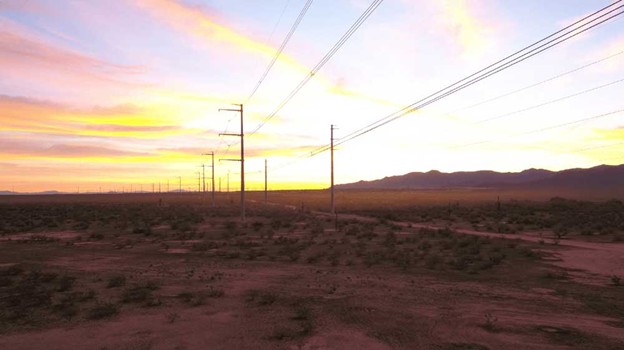
Figure 1 – Source: USFS Draft Environmental Assessment.
The two lines would merge just south of the VOC near the gap between two prominent mesas, with the new steel poles replacing the wooden poles and carrying a total of six lines. [Figure 2]. According to CNF’s most recent plans, the combined power line would then be buried underneath Highway 179 before the remaining half-mile or so would be above-ground as it follows the existing power line route to the VOC substation.
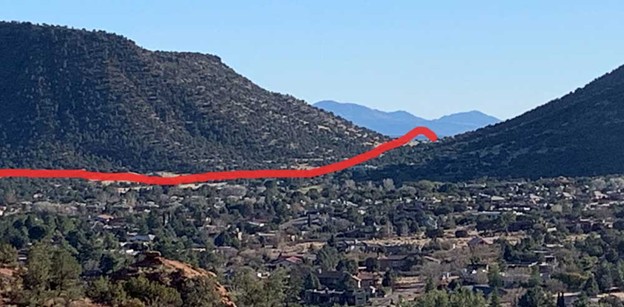
Figure 2 – BPC photo simulation of the proposed route of the APS Transmission line of 65ft high self-weathering steel poles.
In an August 2022 meeting with interested parties, CNF released a modified project route that included burial of segments of the power line along Cornville and Beaverhead Flat roads, but rerouted Kel Fox Trail so that much of the remainder of the power line route would be above ground [Figure 3].
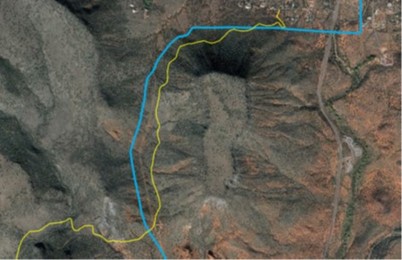
Figure 3 – Source: CNF map from the draft EA showing the proposed rerouting of Kel Fox Trail (in yellow) at the southern side of the VOC. The blue line shows the above-ground route of the new power line (except for a short section where it would be buried beneath Hwy. 179 in the upper portion of the photo).
In addition, the new power line would be above-ground in two sections along Beaverhead Flat Road, at the intersection with Cornville Road and for another half-mile east, and then above-ground again about a mile west of the intersection with Hwy. 179.[Figure 4]
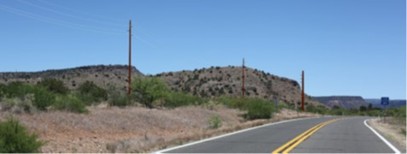
Figure 4 – Source: CNF photo simulation of the powerline looking east on Beaverhead Flat Road as it descends into Dry Beaver Creek valley.
For additional information please contact the Council at bigparkcouncil.inquiry@gmail.com.
